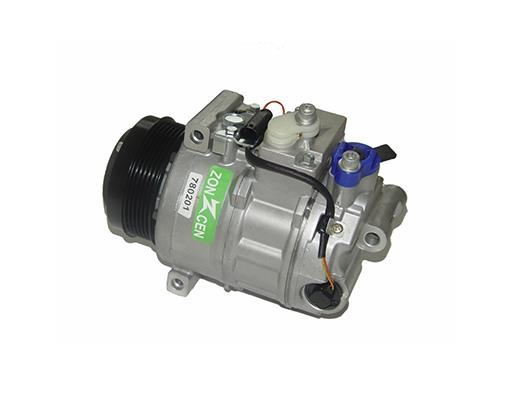
Understanding Car Air Conditioning: Operating Principles & System Components
The season of using cold air conditioning is coming: how to use the A/C switch and the operating principle of the car air conditioning system. These two points are necessary for car users to understand some knowledge; especially the switching method of internal and external circulation, which is very effective in different modes. The ability of air purification and filtration will vary greatly. Let's talk about the air conditioning system of a car.
ZHONGCHENG
Operating Principle of Car Air Conditioning Systems
Role of the Compressor:
The compressor drives the flow of refrigerant, a chemical substance that converts between gaseous and liquid states for cooling. The refrigerant, under compressor pressure, moves through the condenser, drying tank, expansion valve, and finally to the evaporator.
Evaporation Heat Absorption:
The refrigerant's evaporation in the evaporator absorbs heat from the surrounding warm air, cooling it down before being blown into the car interior as cold air by the blower.
Power Source for Compressor:
The compressor requires significant power (2-4 horsepower) to circulate refrigerant. In fuel-powered vehicles, the engine drives the compressor through the crankshaft, resulting in increased fuel consumption when the A/C is active.
A/C Switch and Compressor Control:
The A/C button controls the compressor. When off, it disengages the compressor from the pulley, reducing the load on the engine. When on, the compressor engages and increases power consumption.

Air Circulation Modes
Inner and Outer Circulation: Outer circulation brings unfiltered outside air into the car, undergoing cooling. Inner circulation filters the air, removing impurities or passing it through a PM2.5 filter before entering the car. Inner circulation is preferable in areas with poor air quality.
Electric Vehicle Air Conditioning Systems
Similarities: Electric vehicles have similar inner and outer circulation functionalities but use an electric compressor powered by electricity.
Differences in Heating and Cooling: Electric vehicles lack the high-temperature waste heat from an internal combustion engine for heating. Electric heating is used to warm the coolant, which then heats the circulating water tank to warm the air. Electric vehicles consume more electricity for heating than for cooling.
Note: The basic operational understanding for users lies in mastering the A/C switch and selecting between inner and outer circulation modes. Electric vehicles have similarities in functionalities but differ in heating mechanisms due to the absence of high-temperature waste heat from an internal combustion engine.
-
Trend analysis of automotive air-conditioning compressor industry demand for reciprocating compressors is rising
 2021-04-13
2021-04-13
-
Development status of automobile air-conditioning compressor industry
 2021-04-12
2021-04-12
-
Analysis of key enterprises of electric air-conditioning compressors for new energy vehicles
 2021-04-12
2021-04-12






